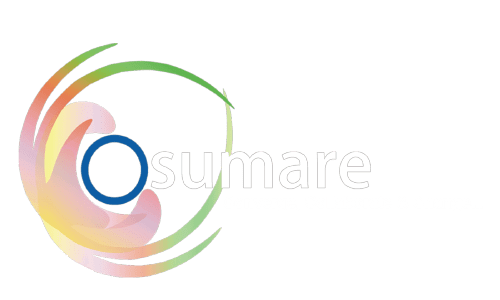Social media connects us in ways that were unimaginable just a few years ago, bringing people together across time zones, cultures, and interests. But for millions of users with disabilities, accessing social platforms can be a frustrating experience. Imagine trying to join a conversation online, only to realize that the images lack meaningful descriptions, videos don’t have captions, or links are impossible to navigate. Accessibility isn’t just a technical detail—it’s about ensuring everyone can participate in the communities we build online.
In this blog, we’ll explore practical ways to make your social media more accessible, so every post reflects the values of inclusion and belonging.
1. Why Accessibility Matters in Social Media
Accessibility isn’t just a buzzword—it’s about human connection. There are over one billion people worldwide with some form of disability. For these individuals, small tweaks to how we share information online can make a world of difference.
When you make your content accessible, you:
- Welcome more people into the conversation—whether they have disabilities or are simply accessing your content in tricky environments (like on a train or with their phone on silent mode).
- Show empathy and build trust, which helps foster deeper connections with your audience.
- Reach a broader audience, including those who might otherwise scroll past inaccessible content.
Everyone benefits from accessible content. It’s about creating social spaces where all voices are heard.
2. Use Alt Text to Make Your Images Meaningful
For many people with visual impairments, screen readers serve as their gateway to the digital world. But if your social posts rely on images without alt text, these users miss out. Adding alternative text (alt text) makes a big difference.
How to Write Great Alt Text:
- Be specific: Instead of “A dog in a park,” try “A golden retriever chasing a blue ball on a sunny afternoon in the park.”
- Focus on what’s relevant: If the picture is part of a campaign or message, emphasize what connects it to your post.
- Keep it concise but informative: Aim for short descriptions without losing important details.
Think of alt text as your way of painting a picture with words for someone who can’t see the image. Many platforms, like Instagram and Twitter (X), offer built-in fields for alt text—just look for the option when posting!
3. Add Captions and Transcripts for Video Content
Ever watched a video with the sound off? Whether you’re in a noisy cafe or trying not to disturb others, captions make it easier to follow along. Now, imagine how important captions are for someone who is deaf or hard of hearing.
Best Practices for Captions:
- Use auto-captions where available but always double-check for errors.
- For platforms that don’t auto-caption, use tools like Kapwing or Rev to add them manually.
- If it’s a longer video or podcast, offer a transcript to give viewers another way to engage with your content.
Captions and transcripts are about giving everyone a choice: to watch with sound, without sound, or in the way that works best for them.
4. Make Hashtags Easier to Read with CamelCase
Hashtags are great for expanding your reach, but they can be tricky for screen readers. When a hashtag is written in lowercase (like #inclusivesocial), it’s hard for the reader to tell where one word ends and the next begins.
The Solution? CamelCase:
Write hashtags like this: #InclusiveSocial instead of #inclusivesocial. Not only does this help screen readers, but it also makes the hashtag easier for everyone to read.
5. Use Emojis Thoughtfully
Emojis add personality to posts, but too many can create barriers. Imagine a screen reader saying, “Smiling face, smiling face, clapping hands, party popper…” for every emoji you use. It gets repetitive—and annoying—fast!
Emoji Etiquette:
- Use them in moderation and make sure they add meaning to your message.
- Place emojis at the end of sentences so they don’t interrupt the flow.
- Avoid long strings of emojis. One or two can be fun; 10 in a row becomes overwhelming.
A little emoji goes a long way—use them like sprinkles, not the whole cake!
6. Write Clear, Simple Text
Social media thrives on fast, digestible content. But that can be a double-edged sword, especially for people with cognitive disabilities or those who process information differently. Clear communication makes it easier for everyone to engage with your content.
Tips for Accessible Text:
- Keep sentences short and to the point.
- Break up text with bullet points or short paragraphs.
- Use plain language—avoid unnecessary jargon.
Accessibility isn’t about “dumbing down” content. It’s about communicating in ways that are easy to understand. After all, clarity helps all of us—whether we’re skimming through a post on the go or diving deep into a topic.
7. Make Your Visuals Friendly for Everyone
Bright, colorful graphics are fun, but they can also cause problems for users with low vision, color blindness, or epilepsy.
How to Create Accessible Visuals:
- Check color contrast: Use tools like WebAIM’s Color Contrast Checker to make sure your text is easy to read.
- Avoid flashing elements or strobe-like animations that could trigger seizures.
- If your post relies heavily on visuals, describe the content in text to ensure no one is left out.
Accessible visuals don’t have to be boring—they just need to be thoughtful.
8. Use Descriptive Links
Links like “click here” or “read more” can be confusing for screen reader users, who need more context to understand what the link is about. Instead, describe where the link leads.
Example:
- Instead of: “Click here for more info.”
- Try: “Learn more about our accessibility efforts.”
This makes navigation smoother for everyone, especially those using assistive technology.
9. Test Your Content’s Accessibility
Even with the best intentions, it’s easy to miss something. That’s why testing your content is essential.
Tools to Use:
- Screen readers like VoiceOver (iOS) or TalkBack (Android) give you a sense of how your content sounds to someone with a visual impairment.
- Color contrast checkers ensure your text is readable for people with color blindness.
- Many platforms, like Facebook, offer accessibility alerts—pay attention to these!
Don’t hesitate to ask people with disabilities for feedback. They’ll have insights you may not have considered.
10. Make Accessibility Part of Your Routine
Creating accessible social media isn’t a one-time fix—it’s a habit. The more you practice it, the more natural it becomes.
How to Build the Habit:
- Create a checklist to follow when posting.
- Stay updated on new accessibility features from your favorite platforms.
- Engage with disability advocates online—listen, learn, and adjust.
Accessibility isn’t just an extra step; it’s part of building a more inclusive digital world where everyone can participate.
Conclusion
Accessibility on social media isn’t just a checkbox—it’s about making sure everyone can be part of the conversation. Small efforts, like writing alt text, adding captions, or using CamelCase hashtags, can make a world of difference for someone. When we create content with accessibility in mind, we build stronger connections, foster inclusivity, and show our audience that they truly belong.
For businesses looking to grow online, accessibility is also a smart move. If you’re partnering with one of the best digital marketing agencies in Dubai, they’ll know how to make your social media campaigns inclusive and effective. Many of the top digital marketing agencies in Dubai are already leading the way, helping brands not only reach new customers but do so in ways that reflect care and empathy.

